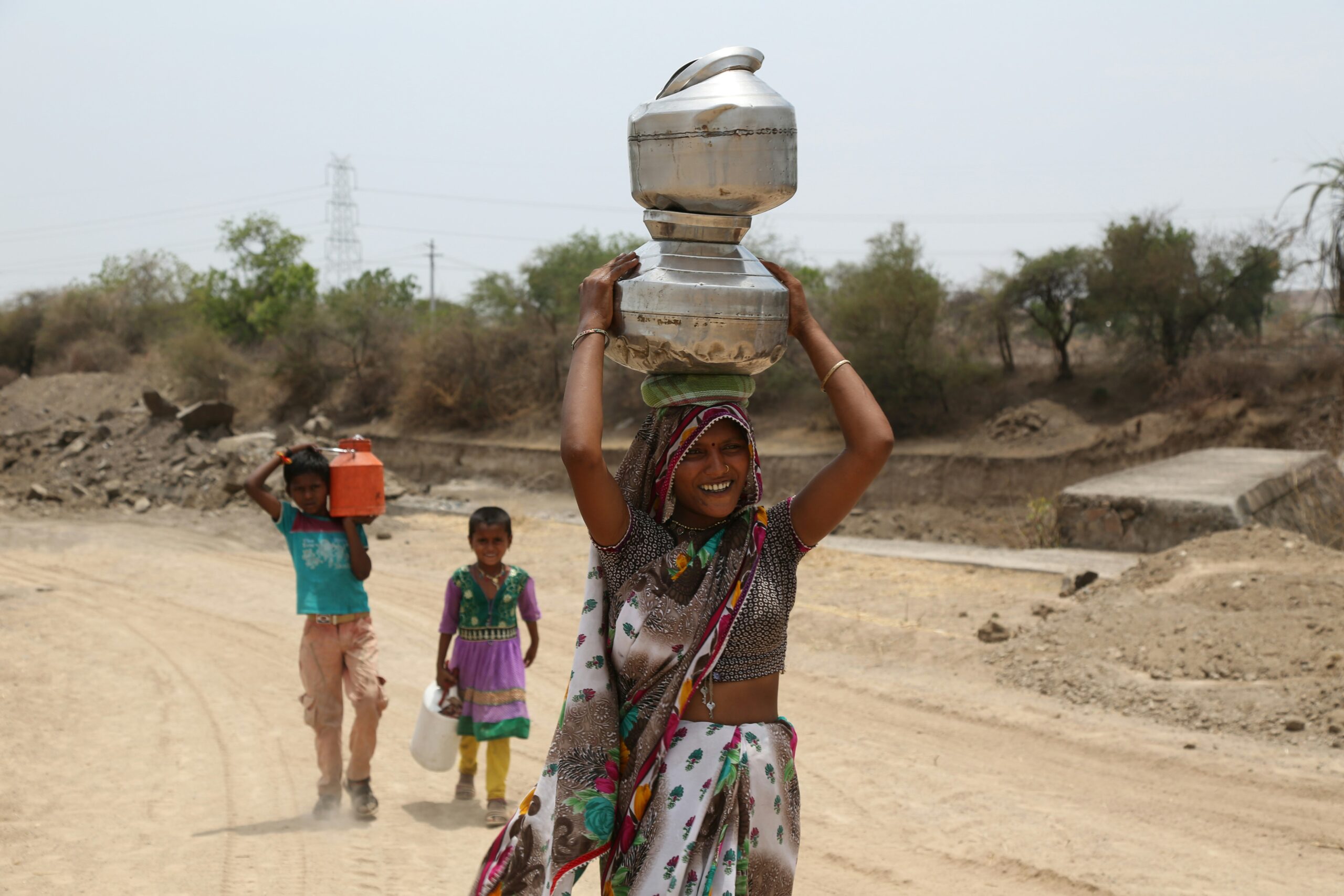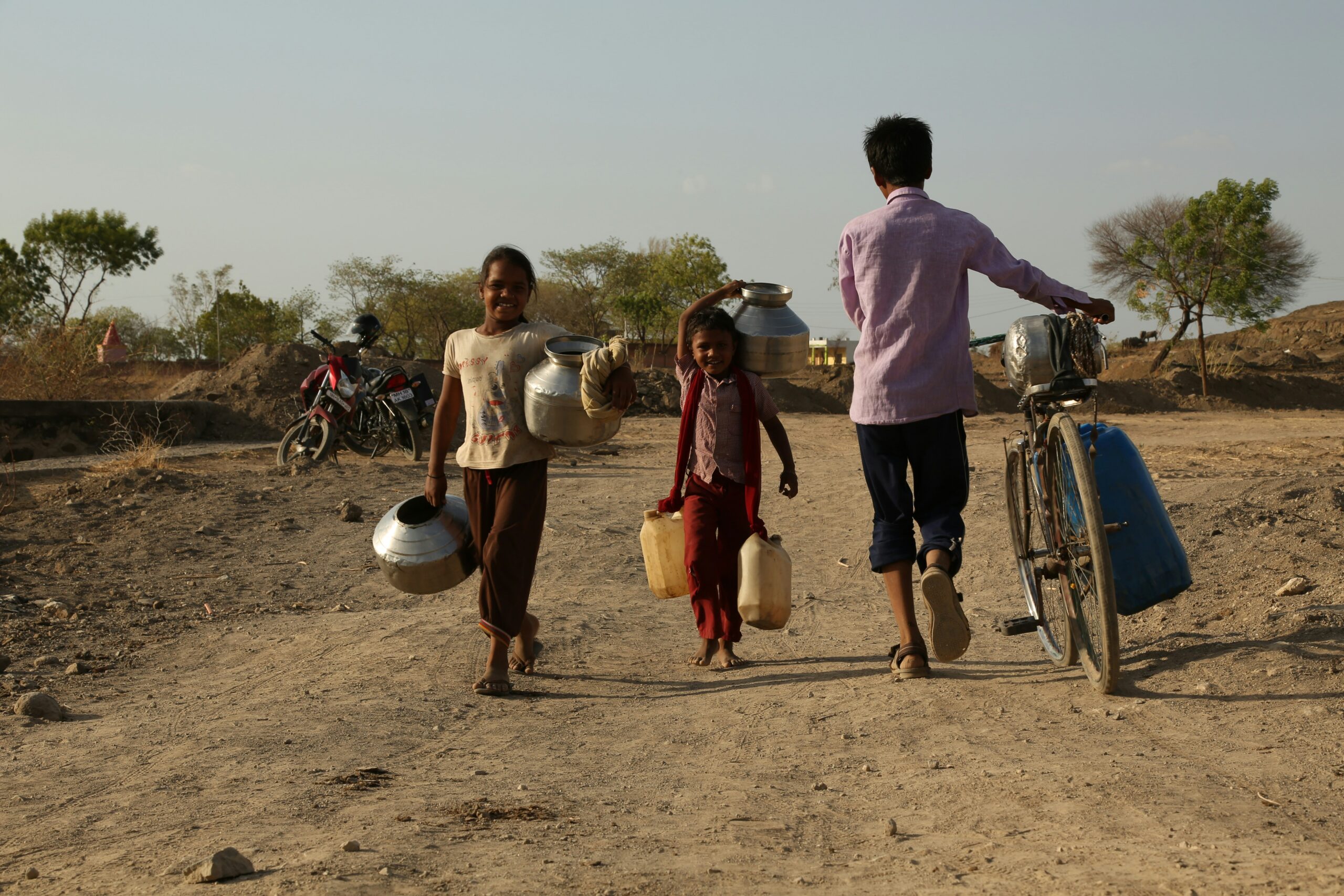In this article, you will explore the challenges that one might face in their journey towards preparedness. From unforeseen obstacles to the struggle of adapting to new circumstances, navigating the path of preparedness can be a daunting task. Join us as we shed light on these challenges and offer insights on how to overcome them. So, if you are ready to equip yourself with the necessary knowledge, let’s embark on this enlightening exploration together.
Understanding the Concept of Preparedness
Lack of Knowledge About Preparedness
One of the major challenges in achieving preparedness is the lack of knowledge and understanding about what preparedness actually entails. Many individuals are unaware of the importance of being prepared for emergencies and disasters, and therefore do not prioritize it in their lives. This lack of knowledge can lead to a sense of complacency and a failure to take necessary steps to prepare for potential hazards.
Misconception About Preparedness
Another challenge is the misconception that preparedness is solely about stockpiling supplies and having emergency plans in place. While these are certainly important aspects of preparedness, they only scratch the surface of what it truly means to be prepared. Preparedness goes beyond simply having the necessary tools and plans – it also involves being mentally and emotionally ready to respond to emergencies, as well as having the skills and training to effectively mitigate and respond to different situations.
Difficulties in Grasping the Broad Scope of Preparedness
The broad scope of preparedness can be overwhelming and difficult for individuals to fully grasp. Preparedness encompasses a wide range of factors, including education, training, financial considerations, physical abilities, regulatory and policy challenges, communication barriers, cultural differences, ongoing changes and developments, psychological factors, and geographical challenges. Understanding and addressing all these aspects requires a comprehensive approach that takes into account the unique circumstances and needs of different individuals and communities.
Education and Training
Inadequate Education on Emergency Preparedness
One of the challenges in achieving preparedness is the lack of adequate education on emergency preparedness. Many individuals have not received formal education or training on how to effectively respond to different types of emergencies. Without this knowledge, individuals may not be aware of the specific steps they need to take in order to prepare for and respond to various hazards.
Lack of Proper Training for Handling Emergencies
In addition to a lack of education, there is also a lack of proper training for handling emergencies. It is not enough to simply provide information on preparedness – individuals need practical training and hands-on experience in order to effectively respond to emergencies. This includes knowing how to administer first aid, perform CPR, operate emergency equipment, and coordinate with emergency response teams.
Gap Between Theory and Practice in Training
Another challenge is the gap between theory and practice in training. While individuals may receive theoretical training on emergency preparedness, the practical application of this knowledge is often lacking. This can lead to a disconnect between what individuals have learned in training and how they actually respond in real-life situations. Bridging this gap requires providing opportunities for practical training exercises and simulations, allowing individuals to apply their knowledge in realistic scenarios.

Financial Constraints
Inadequate Funding for Preparedness Programs
Financial constraints pose a significant challenge in achieving preparedness. Many preparedness programs, both at the community and individual level, require funding in order to be effective. However, inadequate funding can limit the resources available for these programs, resulting in a lack of infrastructure, supplies, and training opportunities. Without sufficient funding, it becomes difficult to implement comprehensive preparedness initiatives and ensure that communities and individuals have access to the necessary resources.
High Costs of Emergency Supplies and Tools
In addition to inadequate funding, the high costs associated with emergency supplies and tools can present a barrier to achieving preparedness. Many essential items, such as emergency food, water, first aid kits, and communication devices, can be expensive. This can place a financial burden on individuals and communities, making it difficult for them to afford the necessary supplies to effectively respond to emergencies.
Lack of Financial Resources for Continuous Training and Education
Continuous training and education are essential for maintaining preparedness over time. However, the lack of financial resources can hinder individuals and communities from accessing ongoing training and education opportunities. Without regular updates and refreshers, knowledge and skills can become outdated, reducing the effectiveness of preparedness efforts. Finding sustainable funding sources for continuous training and education is crucial in overcoming this challenge.
Physical Limitations
Physical Disabilities That Inhibit Preparedness
Physical disabilities can pose challenges in achieving preparedness. Individuals with physical disabilities may have difficulty accessing and using emergency supplies and equipment. They may also face obstacles in evacuating or finding safe shelter during emergencies. The unique needs and capabilities of individuals with physical disabilities must be taken into account in preparedness planning to ensure that they have equal opportunities to prepare for and respond to emergencies.
Aging Population and Their Limited Capabilities
The aging population presents its own set of challenges in achieving preparedness. As individuals age, their physical capabilities may decline, making it more difficult for them to prepare for and respond to emergencies. Mobility issues, cognitive impairments, and chronic health conditions can all impact an individual’s ability to effectively navigate emergency situations. Tailoring preparedness efforts to meet the needs of the aging population is essential in ensuring their safety and well-being during emergencies.
Challenges in Preparing Disabled Individuals for Emergencies
Preparing disabled individuals for emergencies requires special considerations and accommodations. Communication methods must be accessible for individuals with hearing or speech impairments. Evacuation routes and shelters must be designed to accommodate individuals with mobility challenges. Additionally, emergency response personnel must be trained in how to effectively interact and assist disabled individuals during emergencies. Overcoming these challenges requires a collaborative approach involving disabled individuals, community organizations, and emergency management agencies.

Regulatory and Policy Challenges
Ineffective Legislation Pertaining to Preparedness
Ineffective legislation can hinder preparedness efforts. Policies and regulations related to preparedness may be outdated, inadequate, or contradictory, making it challenging for individuals and communities to navigate the regulatory landscape. This can create confusion and barriers to implementing effective preparedness strategies. It is crucial to evaluate and update existing legislation to ensure that it supports and promotes preparedness at all levels.
Unclear Roles and Responsibilities in Emergency Preparedness
Unclear roles and responsibilities can create confusion and hamper preparedness efforts. In emergency situations, it is essential that all individuals and organizations involved understand their specific roles and responsibilities. This includes emergency management agencies, government entities, community organizations, and individuals themselves. Clear guidelines and protocols must be established to ensure effective coordination and collaboration during emergencies.
Lack of Policies Encouraging Community and Individual Preparedness
The lack of policies and incentives encouraging community and individual preparedness is another challenge. While some jurisdictions may have regulations in place related to emergency planning, there is often a lack of comprehensive policies that actively promote preparedness. This can result in a lack of awareness and motivation among individuals and communities to prioritize preparedness. Developing and implementing policies that incentivize and support preparedness efforts can help overcome this challenge.
Communication Challenges
Difficulties in Reaching Out to the Public
Effective communication is crucial in achieving preparedness, but there are often challenges in reaching out to the public. Many individuals may not be aware of the resources and information available to them, or they may not trust the sources of information. Language barriers, cultural differences, and low literacy levels can further complicate effective communication. Strategies such as community outreach programs, multi-lingual resources, and targeted messaging can help overcome these challenges and ensure that information reaches all members of the community.
Ineffective Communication Methods and Channels
Even when efforts are made to reach out to the public, there can still be challenges in effectively communicating information about preparedness. Traditional communication methods may not reach all individuals, particularly those who rely heavily on digital platforms for information. Additionally, the proliferation of misinformation and unreliable sources can impede efforts to disseminate accurate and helpful information. Utilizing a variety of communication methods and channels, including social media, mobile applications, and community networks, can help overcome these challenges and ensure that information is accessible and reliable.
Language and Literacy Barriers in Dissemination of Information
Language and literacy barriers pose challenges in the dissemination of information about preparedness. In multicultural and multilingual communities, it is important to provide information in multiple languages to ensure that all individuals can understand and act on the information. Additionally, low literacy levels can make it difficult for individuals to comprehend written information. Using visual aids, videos, and clear and concise language can help overcome these barriers and ensure that information is accessible to all members of the community.

Cultural Differences
Cultural Beliefs Hindering Preparedness
Cultural beliefs and practices can hinder preparedness efforts. In some cultures, there may be a belief that disasters are inevitable or that preparation is unnecessary. Cultural norms and traditions may prioritize other aspects of life over preparedness, leading to a lack of motivation or engagement with preparedness activities. Respecting cultural beliefs while also emphasizing the importance of preparedness can help bridge this gap and encourage individuals and communities to prioritize preparedness.
Respecting Cultural Diversity in Preparedness Planning
Promoting cultural diversity in preparedness planning is crucial to ensuring that all individuals and communities are accounted for. Different cultures may have unique needs and ways of approaching preparedness. By actively involving culturally diverse individuals and communities in the planning process, their perspectives and experiences can be considered, leading to more effective and inclusive preparedness strategies. This may involve collaborating with community leaders, cultural organizations, and religious institutions to tailor preparedness efforts to specific cultural contexts.
Lack of Cultural Sensitivity in Preparedness Campaigns
A lack of cultural sensitivity in preparedness campaigns can hinder engagement and participation from culturally diverse populations. Campaigns that do not consider cultural norms, values, and communication preferences may not effectively resonate with these communities. To overcome this challenge, it is important to conduct thorough research and consultation with culturally diverse communities to ensure that messaging and outreach efforts are culturally sensitive and inclusive.
Ongoing Changes and Developments
Technological Developments
Technological developments play a significant role in shaping preparedness efforts. Advances in communication technology, such as mobile applications, social media, and alert systems, have greatly enhanced the ability to disseminate real-time information during emergencies. Other technological advancements, such as remote sensing and predictive modeling, contribute to early warning systems and improve the understanding of potential hazards. Keeping up with these ongoing changes and developments is essential in maintaining effective and up-to-date preparedness strategies.
Climatic Changes and Their Impacts on Preparedness
Climatic changes, including extreme weather events, rising sea levels, and changing precipitation patterns, present challenges to preparedness. These changes can increase the frequency and intensity of natural disasters, requiring communities to adapt their preparedness strategies to mitigate and respond to these new challenges. This may involve updating infrastructure, revising evacuation routes, and implementing climate-resilient measures. Incorporating the impacts of climatic changes into preparedness planning is crucial in ensuring the resilience of communities.
Scientific Discoveries and Their Incorporation in Preparedness
Scientific discoveries contribute to our understanding of hazards and the best practices for preparedness. Ongoing research in fields such as meteorology, seismology, and epidemiology provide valuable insights into the risks and impacts of disasters. This knowledge informs preparedness strategies and allows for evidence-based decision-making. Incorporating scientific discoveries into preparedness planning ensures that strategies are built on the latest understanding of hazards and their potential consequences.
Psychological Factors
Denial and Complacency About Disasters
Psychological factors can pose challenges in achieving preparedness. Denial and complacency about the possibility and severity of disasters can prevent individuals and communities from taking necessary preparedness actions. Some individuals may believe that disasters will not happen to them or that the impacts will not be significant. Overcoming denial and complacency requires raising awareness about the potential risks and consequences of disasters, as well as emphasizing the importance of preparedness as a collective responsibility.
Fear and Anxiety Leading to Inaction
On the other end of the spectrum, fear and anxiety about disasters can also hinder preparedness efforts. Some individuals may become overwhelmed by the potential threats and feel paralyzed, unsure of how to take effective action. Managing fear and anxiety involves providing individuals with accurate information, practical steps they can take to prepare and respond, and resources for emotional support. Emphasizing personal empowerment and resilience can help individuals overcome their fears and take proactive measures to enhance their preparedness.
Managing Stress and Panic During Emergencies
During emergencies, stress and panic can significantly impact individuals’ ability to effectively respond. The chaotic and potentially life-threatening nature of emergencies can lead to high levels of stress and panic, which can impair decision-making and hinder rational responses. Providing individuals with training on stress management techniques, such as deep breathing exercises and mental grounding exercises, can help mitigate the negative effects of stress and panic. Building resilience and the ability to stay calm and focused in high-pressure situations is essential in ensuring effective responses to emergencies.
Geographical Challenges
Geographical Isolation Limiting Access to Preparedness
Geographical isolation can present challenges in achieving preparedness, particularly in rural and remote areas. Individuals living in these areas may be physically distant from emergency services, making it more difficult to access necessary resources and assistance during emergencies. Additionally, limited infrastructure and communication networks may hinder the dissemination of information and the coordination of response efforts. Tailoring preparedness strategies to the unique needs and challenges of geographically isolated areas is essential in ensuring their resilience.
Natural Features Affecting the Ease of Preparedness
The natural features of an area can impact the ease of preparedness efforts. For example, areas prone to flooding may require specific measures, such as the construction of flood barriers or the implementation of early warning systems. Similarly, areas at high risk of wildfires may need strategies focused on vegetation management and community evacuation plans. Understanding the natural features and potential hazards of an area is crucial in developing preparedness strategies that effectively address the specific challenges posed by these features.
Challenges in Serving Dense Urban Areas
While dense urban areas may have access to more resources and infrastructure compared to rural areas, they also present unique challenges in achieving preparedness. The high population density can make it difficult to reach and engage all individuals in preparedness initiatives. The large number of buildings, transportation systems, and critical infrastructure also increases the complexity of planning and responding to emergencies. Developing tailored strategies for dense urban areas, such as community-based preparedness programs and coordinated response plans, is necessary to overcome these challenges.
In conclusion, achieving preparedness is a complex and multifaceted endeavor that requires addressing various challenges. From understanding the concept of preparedness to overcoming physical, financial, regulatory, communication, cultural, and geographical barriers, each aspect plays a crucial role in ensuring the effectiveness of preparedness efforts. By actively tackling these challenges and implementing comprehensive strategies, individuals and communities can enhance their resilience and ability to respond effectively to emergencies and disasters.

